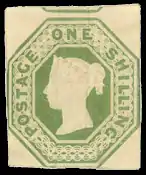Tangible investment
A tangible investment is something physical that you can touch. It is an investment in a tangible, hard or real asset or personal property. This contrasts with financial investments such as stocks, bonds, mutual funds and other financial instruments.[1]

Some assets are held purely for their ability to appreciate, such as collectibles, while others are held for the income they generate while they depreciate, such as equipment held for lease. Others exhibit a combination of properties, appreciating in market value while depreciating in book value, such as rental real estate. Timberland exhibits depletion of timber combined with appreciation of land. Other assets’ values fluctuate with supply and demand, such as commodities, which are liquid investments unlike most other tangible investments.
These various properties, together with the lack of correlation to traditional asset class values, make tangible investments a means of reducing overall investment risk through diversification.
Types
All of the following are tangible investments:
- Businesses
- Real estate and land
- Infrastructure as an asset class[2][3] (as opposed to traditional government-funded infrastructure)
- Commodities and natural resources such as industrial and precious metals and minerals, oil, agricultural commodities, fish, livestock and forestry
- Collectibles of all kinds, including:
- Antiques and ancient artifacts
- Fine art
- Postage stamps (see philatelic investment)
- Coins (see coin collecting) and banknotes
- Autographs and historic documents
- Memorabilia, such as political, celebrity, and sports memorabilia
- Firearms and militaria
- Trading cards
- Jewelry and timepieces
- Fine wines and spirits
- Classic cars
- Rare books
- Musical instruments
- Toys
See also
References
- S. Ferris and A. Makhija, "Tangible Assets as Investments: A Risk and Return Analysis,", Akron Business and Economic Review, Vol. 18, No. 3, Fall 1987, pp. 115-128
- WPC Conference Committee (9 February 2012). "Infrastructure As A New Asset Class for Pensions and SWFs" (PDF). 2nd Annual World Pensions Forum, Roundtable led by Arbejdsmarkedets TillægsPension (ATP), Denmark’s National Supplementary Pension. Retrieved 17 August 2017.
- Firzli, M. Nicolas J. (24 May 2016). "Pension Investment in infrastructure Debt: A New Source of Capital for Project Finance". World Bank (Infrastructure and PPPs Blog). Washington, DC. Retrieved 9 August 2017.